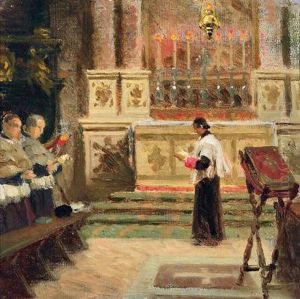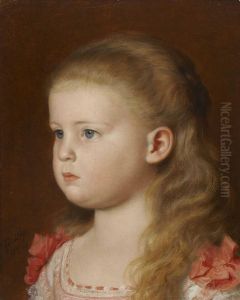Ferdinand Laufberger Paintings
Ferdinand Laufberger was an Austrian painter, draftsman, and illustrator, born on August 31, 1832, in Vienna. His artistic journey began at the Academy of Fine Arts Vienna, where he was a student of renowned painter Leopold Kupelwieser and historical painter Carl Rahl. Laufberger's style was heavily influenced by the Biedermeier period, which is reflected in the meticulous detail and clarity of his works.
During his life, Laufberger became known for his historical scenes, genre paintings, and portraits. His attention to detail and his ability to capture the essence of his subjects made him a sought-after portraitist among the Viennese elite. Laufberger was also a talented illustrator, contributing to various publications of the time, which helped popularize his work and brought him a wider audience.
In the 1860s, Laufberger's style evolved as he became more interested in the Romantic movement. His later works featured more dramatic compositions and a heightened sense of emotion, which differentiated them from the more restrained and formal characteristics of the Biedermeier period.
Tragically, Ferdinand Laufberger's life was cut short when he died on May 4, 1870, at the age of 37. Despite his early death, Laufberger left behind a legacy of work that continues to be appreciated for its historical significance and artistic merit. His paintings can be found in various museums and private collections, providing a glimpse into the rich cultural tapestry of 19th-century Austria.

